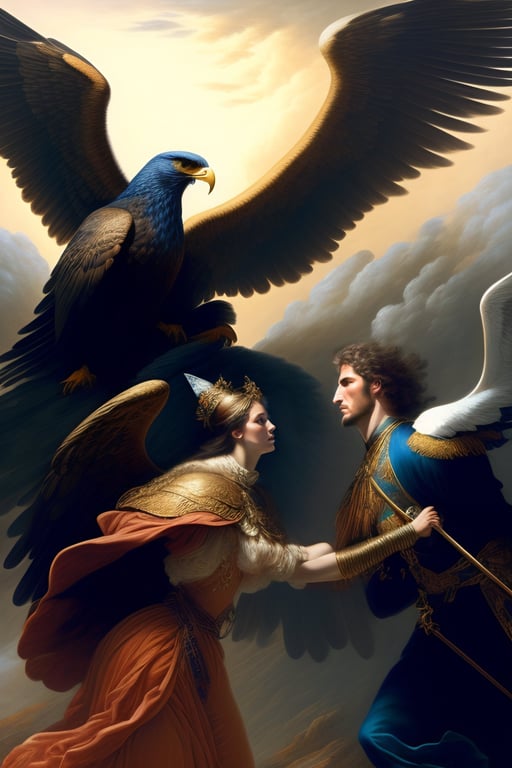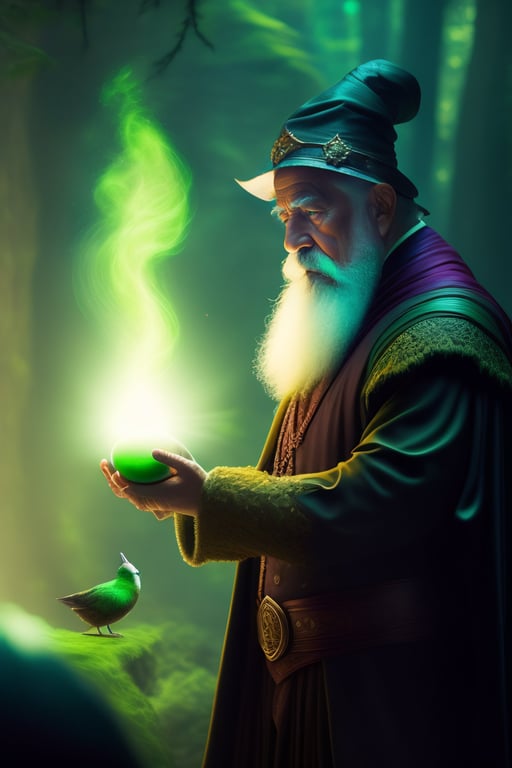The Role of Magic and Spells in Ancient Mythology
The Role of Magic and Spells in Ancient Mythology
Introduction:
Magic and spells have played a crucial role in the mythology of ancient civilizations. These beliefs have been passed down from generation to generation and have helped shape their understanding of the world around them. In this blog, we will explore the role of magic and spells in ancient mythology, from the ancient Greeks to the Aztecs, and how they influenced the beliefs and traditions of each culture.
The Greeks:
The Greeks believed in the power of magic and spells, and their mythology is filled with stories of gods and goddesses using them to accomplish their goals. One of the most famous examples of this is Medea, a sorceress who helped Jason obtain the Golden Fleece. Medea used her knowledge of magic and spells to help Jason defeat his enemies and ultimately win the Fleece.
The Greeks also believed in the power of curses, which were often used to punish those who had wronged others. For example, in the story of Oedipus, the king of Thebes is cursed by the gods for unknowingly marrying his own mother. The curse brings destruction to his family and his kingdom, showing the power of magic and its ability to bring both good and bad outcomes.
The Egyptians:
The ancient Egyptians were also known for their use of magic and spells. They believed that magic could be used to protect themselves from evil spirits and to cure illnesses. The Egyptians also believed in the power of talismans, which were objects believed to have magical powers that could bring good luck or ward off evil.
One of the most famous examples of magic in Egyptian mythology is the story of Isis and Osiris. Isis, the goddess of magic, used her powers to bring Osiris back to life after he was killed by his brother Set. Her magic allowed Osiris to be resurrected and become the god of the afterlife, demonstrating the power of magic and its ability to bring back the dead.
The Norse:
The Norse also believed in the power of magic and spells, which they believed could be used to change the course of destiny. The Norse gods and goddesses were known for their use of magic, with Odin being the most skilled practitioner of all. He was known for his ability to see into the future and use magic to change the outcome of events.
One of the most famous examples of magic in Norse mythology is the story of Thor and the Midgard Serpent. Thor uses his magical hammer to fight the serpent, but the serpent is ultimately defeated by the magic of the giantess who controls it. The story shows the power of magic and its ability to affect even the most powerful of beings.
The Aztecs:
The Aztecs believed in the power of magic and spells, which they believed could be used to control the forces of nature and to protect themselves from evil spirits. They also believed in the power of sacrifice, which they believed could appease the gods and bring good fortune.
One of the most famous examples of magic in Aztec mythology is the story of Quetzalcoatl. Quetzalcoatl was a god who was known for his ability to perform magical feats, such as bringing rain and controlling the winds. He was also known for his use of sacrifice, which he believed could bring good fortune to his followers.
Conclusion:
In conclusion, magic and spells played a crucial role in the mythology of ancient civilizations. They were used to accomplish great feats, protect oneself from evil, and even bring back the dead. From the Greeks to the Aztecs, magic and spells have influenced the beliefs and traditions of each culture, shaping their understanding of the world around them. While our modern society may view these beliefs as superstition, they continue to fascinate and inspire us with their stories of wonder and magic.
Pictures:
Picture 1: Medea helping Jason obtain the Golden Fleece in Greek mythology
Picture 1: Medea helping Jason obtain the Golden Fleece in Greek mythology
Picture 2: Isis resurrecting Osiris in Egyptian mythology
Picture 3: Odin using his magic in Norse mythology
Picture 4: Quetzalcoatl performing magical feats in Aztec mythology
Picture 1: Medea helping Jason obtain the Golden Fleece
In this picture, we see Medea, the sorceress from Greek mythology, helping Jason obtain the Golden Fleece. Medea is using her knowledge of magic and spells to assist Jason in his quest, showcasing the power and importance of magic in ancient Greek mythology. The Golden Fleece was a symbol of great power and wealth, and the fact that Medea was able to help Jason obtain it through her magic shows the significance of magic in achieving great feats.
Picture 2: Isis resurrecting Osiris
This picture depicts the moment when Isis, the goddess of magic in Egyptian mythology, is resurrecting Osiris. Osiris had been killed by his brother Set, but Isis was able to bring him back to life through her powerful magic. The picture showcases the importance of magic in Egyptian mythology, particularly in its ability to bring back the dead. It also highlights the role of Isis as the goddess of magic and her importance in the Egyptian pantheon.
Picture 3: Odin using his magic
In this picture, we see Odin, the god of wisdom and magic in Norse mythology, using his magic to see into the future. Odin was known for his ability to use magic to change the course of events and to gain knowledge of things that were yet to come. This picture shows Odin's role as the most skilled practitioner of magic in Norse mythology and highlights the importance of magic in Norse culture.
Picture 4: Quetzalcoatl performing magical feats
This picture shows Quetzalcoatl, the god of knowledge and wisdom in Aztec mythology, performing magical feats such as controlling the winds and bringing rain. Quetzalcoatl was also known for his use of sacrifice, which he believed could bring good fortune to his followers. This picture showcases the role of magic in Aztec mythology, particularly in its ability to control the forces of nature and bring good fortune to those who perform the proper rituals and sacrifices.
Overall, these pictures help to illustrate the importance of magic and spells in ancient mythology. They showcase the different ways in which magic was used, from achieving great feats to controlling the forces of nature. While these beliefs may seem like superstition to us today, they were an integral part of the beliefs and traditions of these ancient civilizations and continue to fascinate and inspire us with their stories of wonder and magic.
In ancient mythology, magic and spells were often used as a means of invoking divine power or manipulating the natural world. These practices were deeply ingrained in the beliefs and cultures of these ancient civilizations, and were often performed by skilled practitioners such as priests, sorcerers, and witches.
One of the most important roles of magic in ancient mythology was in the realm of divination. Many ancient cultures believed that through the use of spells and magical rituals, they could communicate with the gods and gain insight into the future. For example, the ancient Greeks used divination rituals such as the casting of lots or the interpretation of bird omens to gain insight into their future fortunes.
Another important role of magic in ancient mythology was in the realm of healing. Many ancient cultures believed that illnesses and diseases were caused by evil spirits or curses, and that the use of magical spells or charms could cure or prevent these afflictions. For example, in ancient Egyptian mythology, the goddess Isis was believed to have the power to heal the sick and even bring the dead back to life through her magical abilities.
Magic also played a significant role in ancient mythology as a means of protection. Many ancient cultures believed that the use of protective spells or amulets could ward off evil spirits or protect them from harm. For example, in ancient Mesopotamia, the god Ea was believed to have the power to protect his followers from evil spirits and curses through the use of magical spells and incantations.
In addition to these practical applications, magic also had a significant role in ancient mythology as a means of storytelling and entertainment. Many ancient myths and legends featured powerful sorcerers and witches who used their magic to achieve great feats or overcome insurmountable obstacles. These stories often served as cautionary tales, warning against the dangers of hubris and the misuse of power.
Overall, the role of magic and spells in ancient mythology was multifaceted and complex. From divination to healing to protection, magic played a significant role in the beliefs and cultures of these ancient civilizations, and continues to inspire and fascinate us with its stories of wonder and power.
=====================================================================
Keywords = ancient mythology, magic, spells, divination, healing, protection, gods, goddesses, sorcerers, witches, rituals, beliefs, cultures, storytelling, entertainment, ancient civilizations, supernatural, occult, mysticism, spiritualism, folklore, superstition, legends, myths, deities, amulets, charms, incantations, power, knowledge, wisdom, fortune-telling, omens, curses, hubris, cautionary tales




Comments
Post a Comment